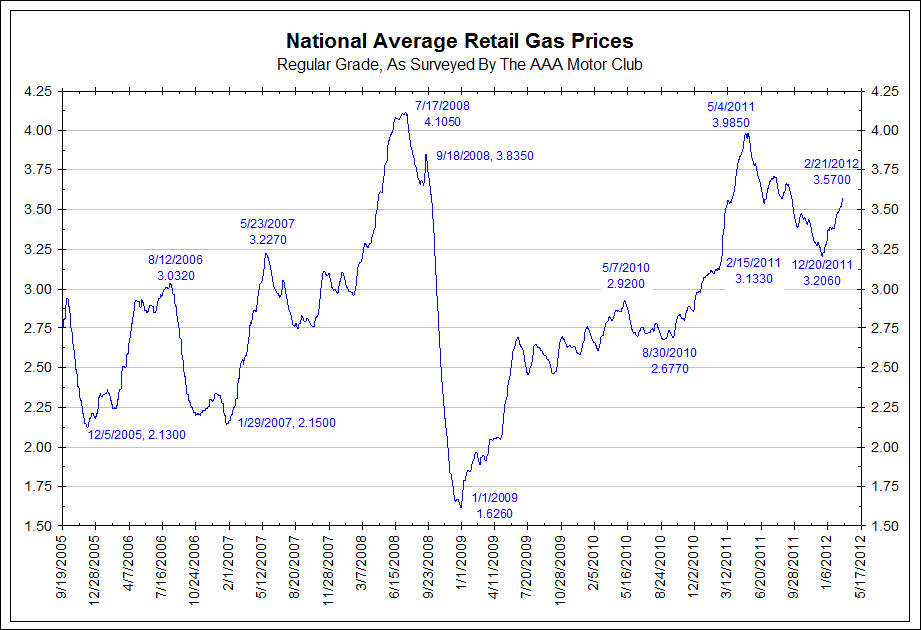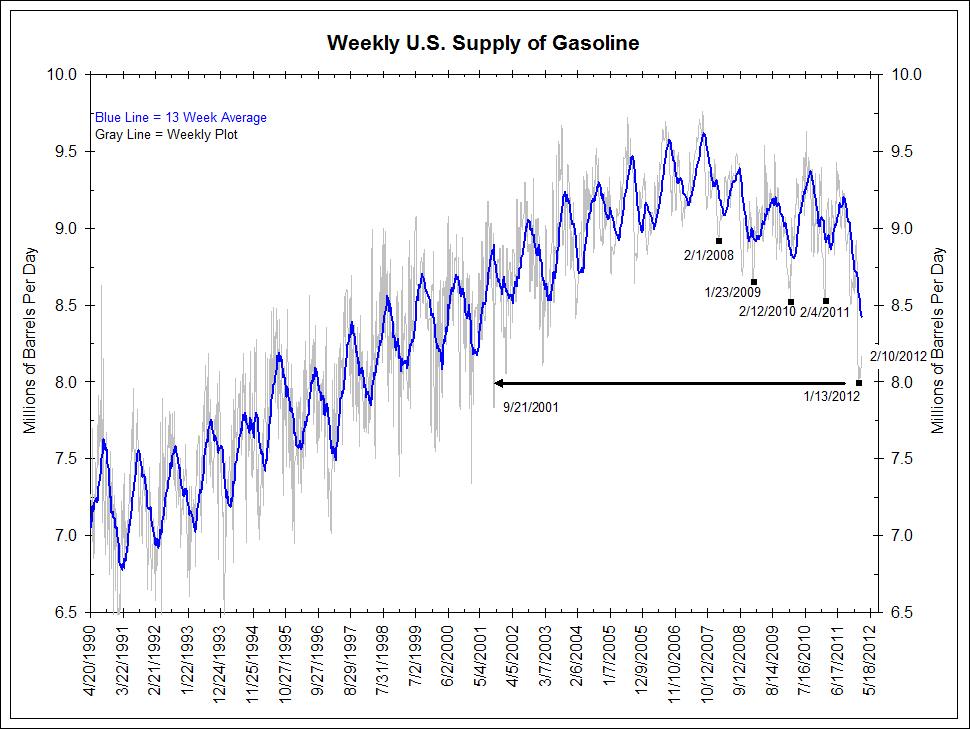The Chicago Tribune – Gas price spike pumping up fears
Potential increase to record highs could slow economy, analysts say
The unseasonably warm weather isn’t the only sign of an early spring. Roiled by the specter of Iranian oil cutoffs, gas prices are rising at a record pace, crossing the $4-a-gallon threshold in some parts of the country, and threatening to break an all-time high, experts say. Fears of $5 per gallon gasoline are in the back of some motorists’ minds, jeopardizing the nascent economic recovery and fueling campaign rhetoric during a presidential election year. “Everybody was worried about Europe as being the precipitating factor to sort of throw the world into a slowdown,” said Tom Kloza, chief oil analyst at Oil Price Information Service. “Higher oil prices could do that too.”
Bloomberg.com – Rising Gas Prices: Not Demand Driven
The national average for gas prices is above $3.50. Yet demand in the U.S. is at its lowest point since 1997. So what’s driving this run-up?
Strangely, the current run-up in prices comes despite sinking demand in the U.S. “Petrol demand is as low as it’s been since April 1997,” says Tom Kloza, chief oil analyst for the Oil Price Information Service. “People are properly puzzled by the fact that we’re using less gas than we have in years, yet we’re paying more.” Kloza believes much of the increase is due to speculative money that’s flowed into gasoline futures contracts since the beginning of the year, mostly from hedge funds and large money managers. “We’ve seen about $11 billion of speculative money come in on the long side of gas futures,” he says. “Each of the last three weeks we’ve seen a record net long position being taken.” Refineries have also been getting squeezed by higher crude prices over the past several months, forcing some of them to shut down rather than operate at a loss, says Stevens. “The price that refineries have been paying for crude was roughly flat, while the price they were getting for gasoline was lower than what they needed to make their crack spread,” he says. A crack spread refers to oil refineries’ profit margins and is roughly the difference between what they pay for crude oil, and what they make by “cracking” crude into petroleum products such as refined gasoline. As the U.S. refining capacity has decreased, prices have begun to rise.
Comment
As the first story and chart above show, the nationwide average of gas prices is on the rise again. Seasonally February typically brings some of the year’s lowest prices. However, the current national average of $3.57/gallon is the highest ever for February. This is why so many are predicting even higher prices this spring/summer.
Last week we noted that the supply of gasoline was plunging, as highlighted in the second story above. The chart below shows the current level is at an 11-year low, yet gas prices are the highest ever for February. Last week we pondered if this, together with the drop in vehicle miles driven, was an economic indicator pointing to a possible slowdown in the economy.
My colleague, Howard Simons, has a different take on this (Subscription only). Either way, gas prices, gasoline supplied (and demand) and miles driven are becoming relevant again.

Source:Bianco Research




What's been said:
Discussions found on the web: